In today’s fast-paced and competitive business landscape, organizations are constantly seeking ways to enhance teamwork, collaboration, and employee engagement. One powerful tool that is often underutilized in this pursuit is creativity. Incorporating creativity into team building events can have a profound impact on team dynamics, problem-solving skills, and overall productivity. Let’s delve into why creativity is crucial in team building events and how it can be effectively integrated.
- Fosters Innovation: Creativity is the fuel for innovation. When teams engage in creative activities during team building events, they are encouraged to think outside the box, explore new ideas, and challenge the status quo. This fosters a culture of innovation where team members feel empowered to contribute their unique perspectives and solutions to problems.
- Enhances Problem-Solving Skills: Creativity is closely linked to problem-solving. By encouraging teams to tackle challenges creatively during team building events, participants develop critical thinking skills, learn to adapt to unexpected situations, and become more resourceful in finding solutions. These problem-solving skills are transferable to the workplace, leading to more effective and efficient teamwork.
- Promotes Communication and Collaboration: Creative team building activities often require effective communication and collaboration among team members. Whether it’s brainstorming ideas, working on a group project, or solving a puzzle, these activities encourage teams to communicate openly, listen to each other’s ideas, and collaborate towards a common goal. This strengthens relationships, builds trust, and improves teamwork.
- Boosts Morale and Engagement: Engaging in creative activities during team building events can be fun, exciting, and memorable for participants. This boosts morale, increases motivation, and fosters a positive team spirit. When employees enjoy the team building experience, they are more likely to be engaged, committed, and enthusiastic about their work.
- Encourages Risk-Taking and Resilience: Creativity often involves taking risks and stepping outside of one’s comfort zone. Team building events that incorporate creative challenges encourage participants to take calculated risks, embrace failure as a learning opportunity, and develop resilience. This mindset shift is valuable in the workplace, where innovation and growth often require taking risks and learning from setbacks.
- Celebrates Diversity and Inclusion: Creativity thrives in diverse and inclusive environments. Team building events that celebrate diversity of thought, background, and perspective foster a culture of inclusivity where every team member feels valued and respected. This diversity of ideas fuels creativity, leading to innovative solutions and better outcomes for the organization.
To effectively leverage the power of creativity in team building events, organizations can consider the following strategies:
- Designing activities that encourage creative thinking, such as brainstorming sessions, design challenges, or artistic projects.
- Incorporating elements of playfulness and fun to make the experience enjoyable for participants.
- Providing opportunities for reflection and discussion to extract insights and lessons learned from the creative activities.
- Recognizing and celebrating individual and team contributions to foster a sense of accomplishment and appreciation.
- Continuously seeking feedback from participants to improve future team building initiatives and tailor them to the team’s needs and preferences.
In conclusion, creativity is a valuable asset that can significantly enhance the effectiveness of team building events. By fostering innovation, enhancing problem-solving skills, promoting communication and collaboration, boosting morale and engagement, encouraging risk-taking and resilience, and celebrating diversity and inclusion, creativity contributes to building high-performing teams capable of driving success and growth in today’s dynamic business environment.
